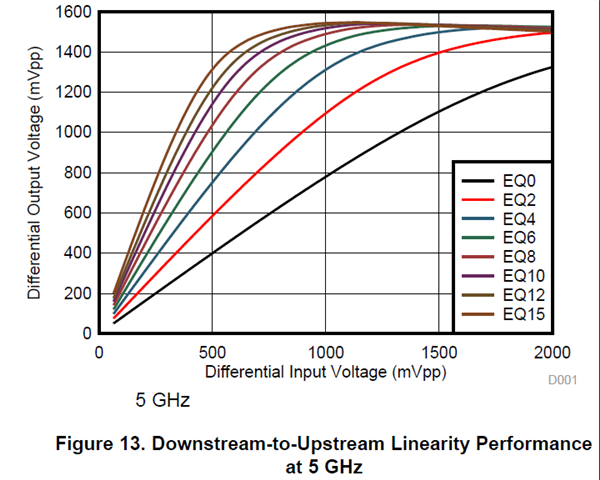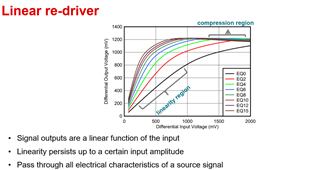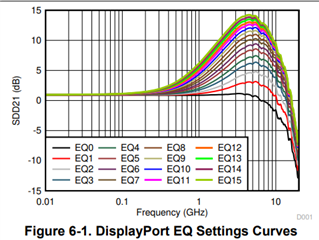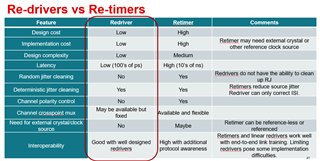Hi team,
About TUSB1044 and USB redriver, I have 3 questions:
1. In the picture below, what's the difference between EQ0~EQ15? What is the meaning of the coordinates? (i.e. Differential input/output voltage)

2. According to USB3 and DP Alt Mode specifications, there exist certain electrical standards which require Type-C ports to meet. What are the standards about? Last week you said that the DP Rx/Tx side loss must be less than 8.5dB. Is this a part of the standard?
3. For Linear redriver, what is its selling point? which features are vital to automotive customers? What is the advantage of our redriver in the market?
Best Regards,
Bengi Long





